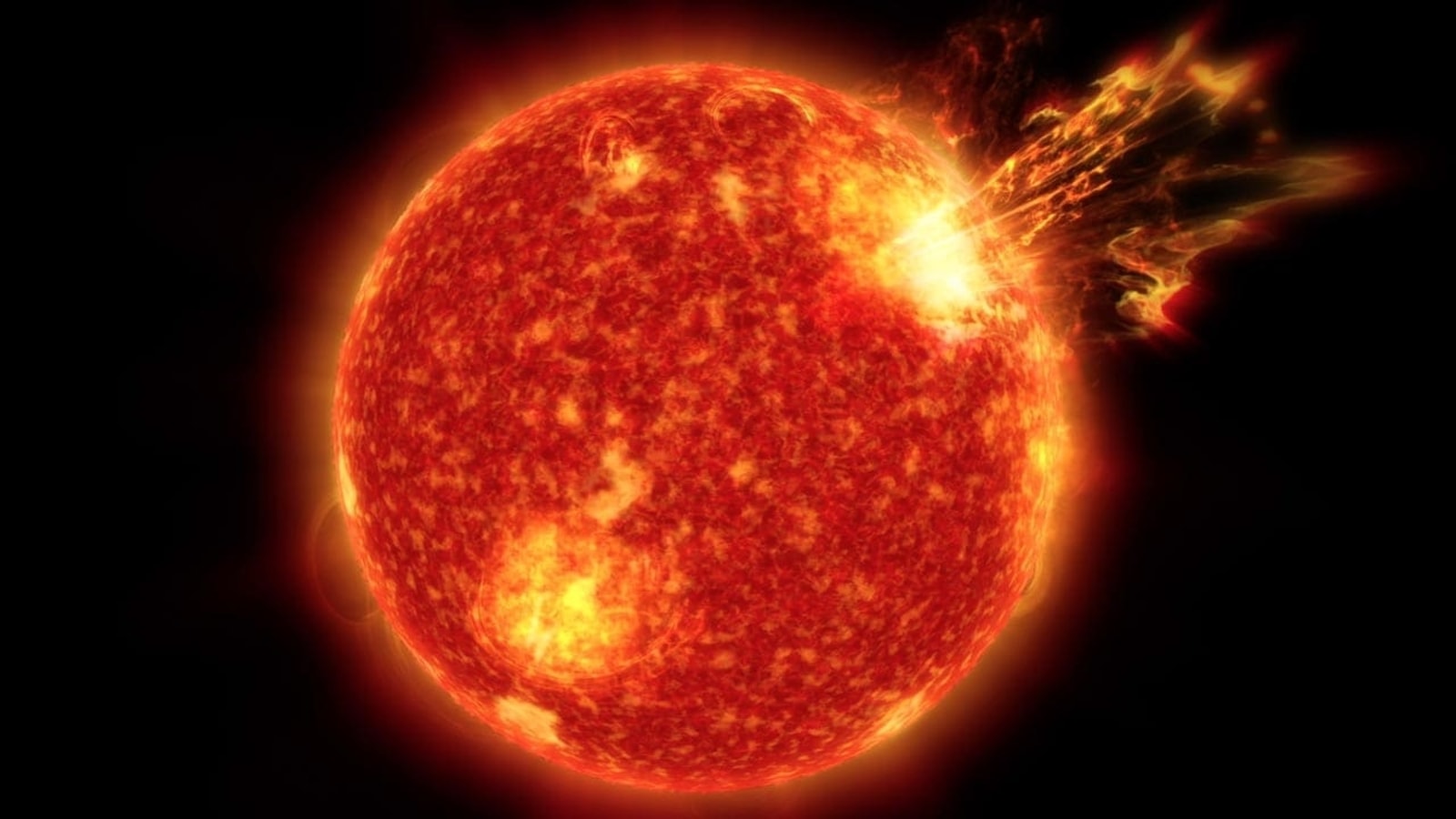New volatile sunspot grows 4 times bigger than the Earth; Will it unleash a solar storm?
A new sunspot has emerged on the Sun, which has grown overnight to gain a size four times the size of the Earth. The sunspot likely harbors an unstable magnetic field and can explode, sparking a solar storm.






 View all Images
View all ImagesAs astronomers continue to monitor the sunspot AR3311 for any signs of eruption, a new sunspot is making a mark on the Sun. This new sunspot was practically invisible to the telescopes of NASA and the National Oceanic and Atmospheric Administration (NOAA). But in just 24 hours, it has grown as big as four Earths combined! This exponential growth is also due to the huge amount of unstable magnetic field it harbors within itself. Scientists had been expecting an X-class solar flare and a resultant solar storm from the existing sunspot, and the addition of this new one will complicate the situation.
According to a SpaceWeather.com report, “Yesterday, sunspot AR3315 was almost invisible. Today it is four times wider than Earth. The fast-growing sunspot is breaching the surface of the sun's southern hemisphere. Its rapid development could lead to explosive instabilities and solar flares”.
Solar storm scare as sunspot grows 4 times wider than the Earth
There are two factors that govern whether a sunspot can explode and send solar storms towards the Earth or not. The first is the size of the sunspot. The larger a sunspot, the higher the magnetic flux it contains within itself. This region conflicts with the rest of the Sun's surface and its normal magnetic field lines. As the conflict increases, the pressure within the sunspot builds up and it explodes. However, not all large sunspots explode.
This brings us to the second factor which is how concentrated the magnetic flux within a sunspot is. The darker a sunspot appears on the Sun, the higher the chances for explosion. Darker sunspots also have a considerably lower temperature which leads to frequent eruptions so the convection of heat can continue.
Scarily, this sunspot fulfills both these criteria and that's why there is a chance that a severe solar storm can strike the Earth. An extreme solar storm event (G5-class) can cause major damage to our planet. In the worst-case scenario, the resultant solar storm could be equivalent to the Carrington event of 1859 which is the largest recorded solar storm on Earth. A solar storm like that today can be quite terrifying. It can disrupt GPS, hamper mobile networks and the internet, and even cause a massive power outage by corrupting the power grids. Even the electronic devices on Earth are not safe from it.
The role of the NASA Solar Dynamics Observatory
The NASA Solar Dynamics Observatory (SDO) carries a full suite of instruments to observe the Sun and has been doing so since 2010. It uses three very crucial instruments to collect data from various solar activities. They include Helioseismic and Magnetic Imager (HMI) which takes high-resolution measurements of the longitudinal and vector magnetic field over the entire visible solar disk, Extreme Ultraviolet Variability Experiment (EVE) which measures the Sun's extreme ultraviolet irradiance and Atmospheric Imaging Assembly (AIA) which provides continuous full-disk observations of the solar chromosphere and corona in seven extreme ultraviolet (EUV) channels.
Catch all the Latest Tech News, Mobile News, Laptop News, Gaming news, Wearables News , How To News, also keep up with us on Whatsapp channel,Twitter, Facebook, Google News, and Instagram. For our latest videos, subscribe to our YouTube channel.





























